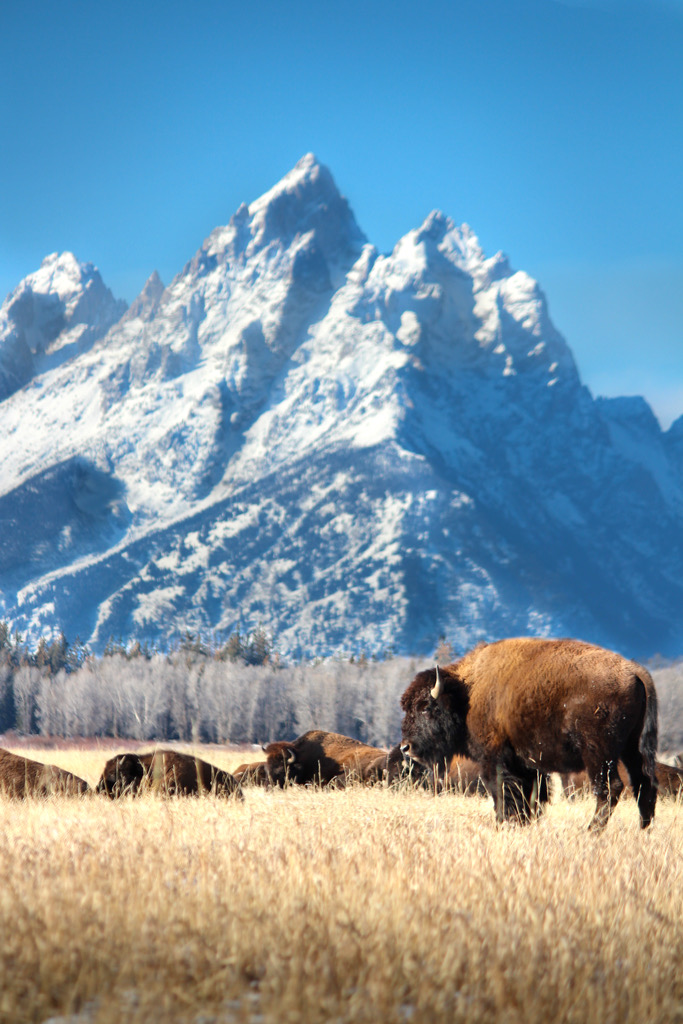
“A world without huge regions of total wilderness would be a cage; a world without lions and tigers and vultures and snakes and elk and bison would be – will be – a human zoo. A high-tech slum.”
Edward Abbey
Buffalo (or bison) are touted as the ultimate conservation success story. But how successful has that effort been? And what could the bison world look like 150 years from now?
The grade-school history lesson is pretty basic: white people show up, shoot all the buffalo, and then conservationists save the day.
This is oversimplified, obviously. The real story – especially the last part – are much more complicated.
The heroes of the early conservation movement, including John Hornaday and Teddy Roosevelt, partly stopped the bison’s extermination. But they were also trophy hunters. Even Native people overharvested buffalo. One Pend Oreille man named Samuel Walking Coyote had the same moral remorse as Roosevelt: he killed a herd of buffalo cows and caught their eight orphan calves.
When Hornaday counted the last living bison in 1880, about a dozen lived in Flathead nation thanks to Walking Coyote. Their descendants repopulated herds in Canada’s Wood Buffalo Park and America’s Yellowstone National Park, keeping the buffalo alive.
In 2022, 500,000 bison now call the US home. They all lived happily ever after. Or did they? Those 500,000 bison includes herds on private land. When scientists attempt to survey populations of “wild” bison – that is bison that roam freely, without being harvested for commerce, without being owned by a ranch, largely free from interbreeding with cattle – the number drops to about 10,000 animals. The Buffalo Field Campaign considers the YNP herd the only wild, migrating herd in the US.
Bison are as free as any zoo animal. The Buffalo Field Campaign, the Buffalo Commons, American Prairie, many Tribal governments, and the public lands of the west are trying to change that story.
The dream now is that the protective quality of Yellowstone expands – into the Gallatin, Targhee, and Shoshone National Forests next to the park. And to stop the mandated yearly slaughter of bison. The challenge isn’t so much ecological but social – making sure our government and neighbors can live with them.
Right now, buffalo in Yellowstone live. But in 2172, buffalo could ROAM.
